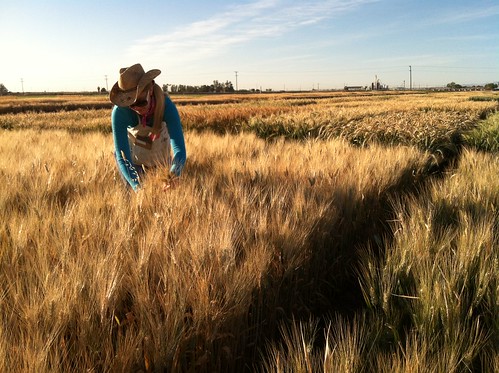
This post is part of the Science Tuesday feature series on the USDA blog. Check back each week as we showcase stories and news from USDA’s rich science and research portfolio.
Bread and pasta are mealtime favorites and household staples for many, but carbohydrates may also present a problem for many who struggle with health issues brought on by obesity. With this in mind, researchers are developing wheat that has positive health implications.
A University of California-Davis-led Triticeae Coordinated Agricultural Project (T-CAP) is introducing changes into durum wheat genes that can increase resistant starch content by more than 750%.
The U.S. Department of Agriculture’s National Institute of Food and Agriculture (NIFA) supported T-CAP with a $25 million grant in 2011 to improve barley and wheat germplasm. Approximately 15 percent of the nation’s harvested wheat acreage and four percent of the harvested barley acreage in 2014 came from wheat and barley varieties developed by T-CAP.
“In the American diet, more than 500 calories come from wheat products each day, which means that any improvements in the nutritional value of wheat could deliver health benefits to consumers,” said Brittany Hazard, a doctoral student working on the T-CAP research team.
Resistant starch is an important component of dietary fiber with many health benefits, including reduced blood glucose and insulin levels, an increased sensation of feeling full after a meal, lower cholesterol, and improved gastrointestinal health.
“Adequate levels of resistant starch may help in obesity-related conditions such as heart disease and Type 2 diabetes,” Hazard said. “Consuming resistant starch may also reduce the risk of colorectal cancer, the second leading cause of cancer-related deaths in the United States.”
These health benefits may drive demand for resistant starch varieties from commercial bread producers and growers as well. Hazard said that it may take 5-10 years of research and development to bring new resistant starch products to market. That work will include educating growers and consumers about quality and nutritional traits and benefits creating new recipes because resistant starch grains differ from conventional products.
Hazard said that resistant starch research is moving in two major directions within the UC-Davis lab—first, by incorporating the genes responsible for the resistant starch trait into wheat breeding programs and, second, by evaluating their first greenhouse and field trial of bread wheat lines and performing similar agronomic and quality studies.
With Americans seeking new and sustainable ways to improve their health and nutrition needs, developments produced through NIFA-funded projects like T-CAP further the ability of producers, growers, and consumers alike to educate themselves and increase their access to best practices and high-quality wheat and grains.
NIFA’s mission: Invest in and advance agricultural research, education, and extension to solve societal challenges. NIFA’s vision: Catalyze transformative discoveries, education, and engagement to address agricultural challenges. For more information, visit http://nifa.usda.gov/.

